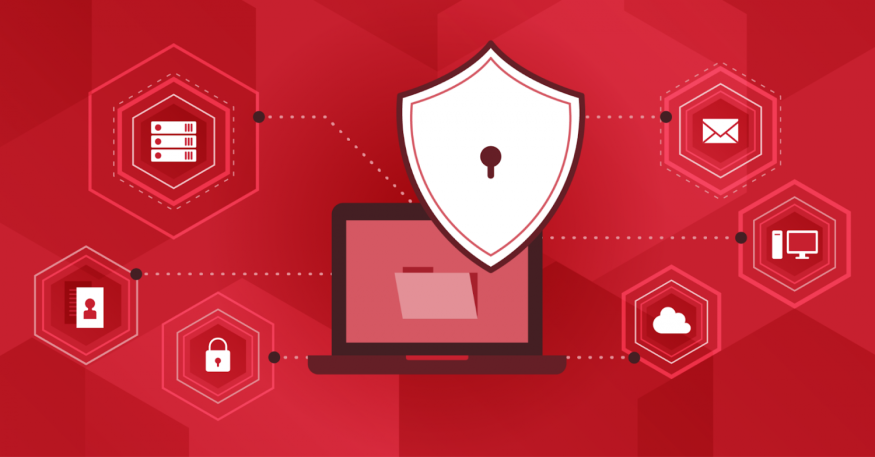
Nowadays, hand-held devices cover practically every sphere of our life, keeping all personal and work-related information. Considering the fact that people don't part with their phones during the day, all the information is always within easy reach, literally at the tips of the fingers. Such easy and quick access definitely benefits the commodity of data usage, however, it is also a major threat to its security.
Around 45% of all the apps that we use contain sensitive data, and there is often integration with the Google account or Apple ID. If the app isn't protected enough, all the personal data will be susceptible to hacker attacks. According to research on online security, global businesses lose more than a trillion dollars a year because of security breaches.
According to Open Web Application Security Project (OWASP), the main security threats are related to:
insecure communication
insecure authentication
insecure data storage
insufficient cryptography
improper platform usage
poor code quality
code tampering
extraneous functionality.
The majority of the users are aware of the threads and manage to comply with the basic rules of safety. However, fraudsters are always innovative regarding the ways of stealing personal information.
A secure IT environment is the complex of actions taken by the developers in order to provide the users with a highly-protected online experience. Apart from 'in-house' protection at the stage of development, numerous businesses hire a custom development company for additional security-related control. Such measures significantly increase the safety of the network environment.

Reliable in-House methods to Secure the IT products
Secure code
When developing a new product, the programmers often use third-party libraries aiming to simplify the whole process. It's quite a common practice, yet before implementing the outside system, it is important to ensure its safety to avoid any 'shared' vulnerabilities. The most applicable methods to check app cyber security are:
Usage of fuzz testing, penetration testing, and source code audits.
Regular code reviews
Tracking the hackers' methods
Usage of the latest updates of the tried-party libraries
Regular memory leak checks and buffer overflows.
Secure code is one of the best ways to protect the environment from being hacked. The developers shouldwork only with proven tools, use code signing and hardening, and check the code for vulnerabilities, as the errors may cost a lot.

Multi-factor authentication
Although everyone is aware of the data leakage, the initial stage of security is still being violated. The passwords are often simple and include quite common patterns. Besides, in order not to forget the combination of numbers and letters, everything is stored on a mobile device. Considering the fact that all the devices are linked to the same account, all the information becomes easy prey for hackers. Another problem is an unlimited number of wrong logins, which became a major threat to security.
It is highly recommended to use multi-factor authentication to ensure a high level of data protection.
Reliable storage
If you store all the sensitive information in local storage, you put it at risk. If the device system is cracked, the first victims are cookie stores, binary data stores, XML data stores, log files, SQL, etc. Therefore, if you decide to keep all the files locally, ensure the usage of data encryption to prevent it from being read by hackers.
Besides, when writing a code, make sure you adjust it to a particular platform, as they may have different security requirements. There are also security guidelines for Android and iOS systems to help developers create a secure mobile environment.
Data encryption
Data security is fundamental in terms of cyber security. Outdated encryption techniques make the software an easy target for hackers. Encryption hides the original content by converting the plain text into a ciphertext. There are two basic methods of encryption:
Symmetric (secret-key)encryption using one cryptographic key
Asymmetric (public-key) encryption - using various keys for encryption and decrypting data.
Secure communication
Security of communication is provided by installing encryption protocols. They help to protect sensitive and financial data, and file transfers using cryptographic methods. Such protocols provide security of data sharing between two ends. The most common practices are:
SSL (Secure Socket Layer) provides data encryption, integrity, and authentication between the client and the server. While creating a secure connection, public and private (session) keys are exchanged, agreeing on algorithms. SSL certificates have to be compatible with the majority of operating systems and browsers, otherwise, an SSL warning is issued.
TLS (Transport Layer Security) protocol, a successor of SSL.
VPN (Virtual Private Network) secures a private network by hiding the IP address and, thus, the user's identity. VPN creates a secure environment by keeping all the private information and login credentials hidden.
Firewall. This technology is used to protect online information, especially such components of e-commerce as Internet Payment Gateway, Server Based Wallet, and Payment Server.
SSH (Secure Shell) is another cryptographic protocol that is implemented for carrying out internet services in a secure environment. It encrypts every command, file transfer, and any kind of output making it protected against attacks.
Testing
Testing is required during each stage of project development, however, post-release testing will also help to validate the top level of security and eliminate any minor security issues that often lead to innumerable losses.
Online security is a burning issue nowadays as cyber attackers become more and more innovative aiming to steal sensitive data. While a few years ago the developers could solve the issue by implementing a few security features, now, they should work on the complex of actions to secure the environment for the users. Each project must have a data protection scenario with all the characteristics, combined with hiring an expert company for external control.
© 2025 ScienceTimes.com All rights reserved. Do not reproduce without permission. The window to the world of Science Times.












